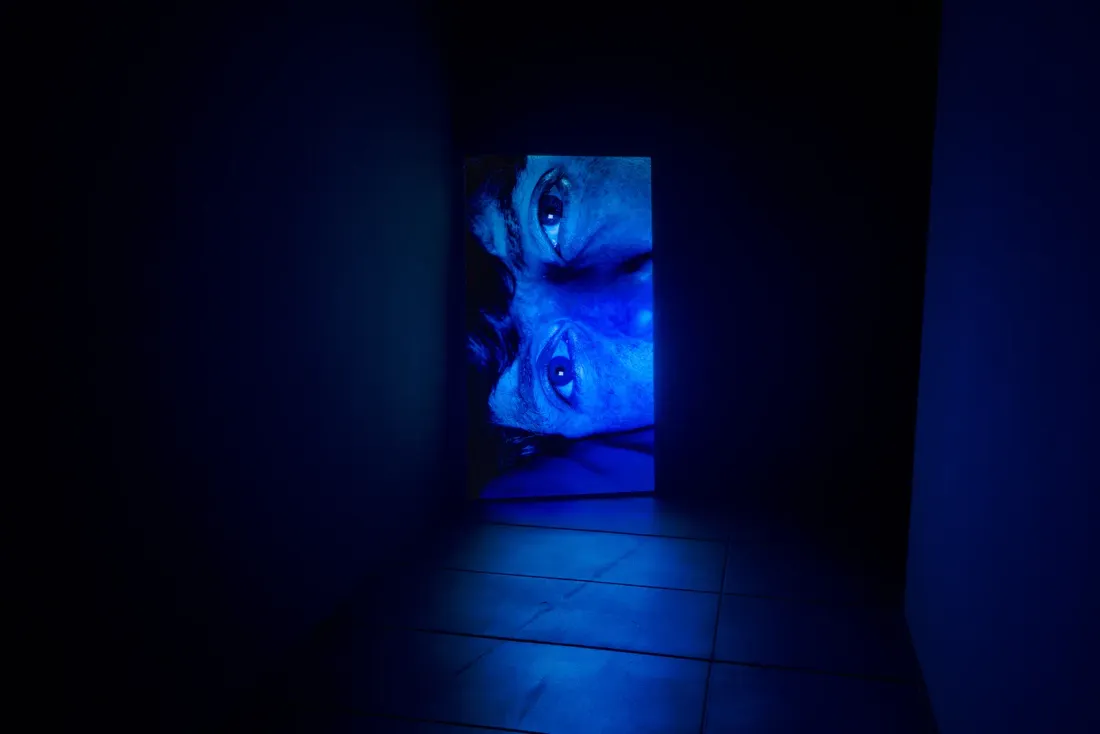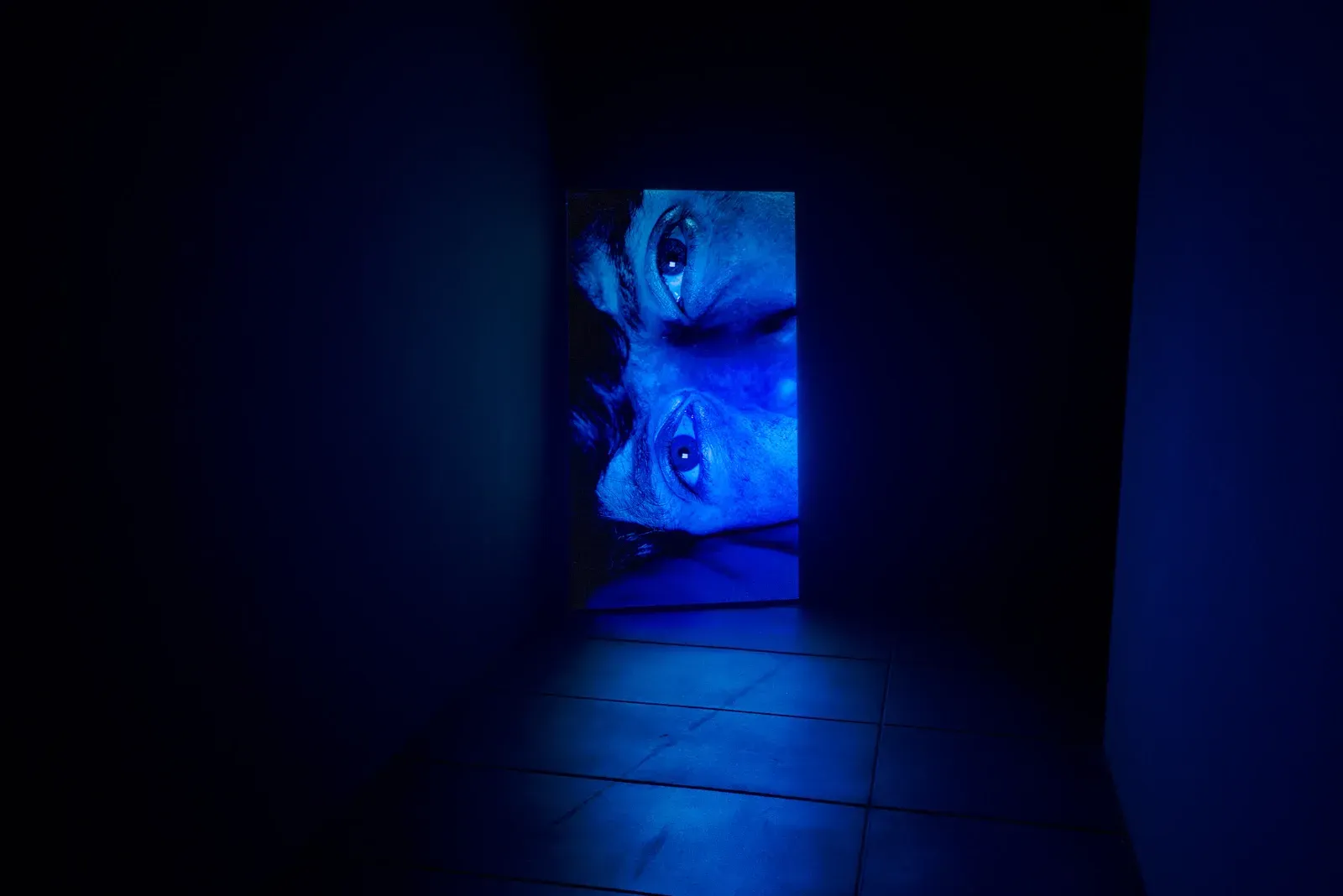Giving Shelter
Written by


What expectations should there be of a public gallery as a safe space? And when does that run counter (to adopt a slogan of Wellington Māori and Pasifika artist community collective Kava Club) to being a ‘safe place for unsafe ideas’? What should safety mean for artists fresh to working in a big public gallery space? And should it also impact on how galleries welcome those artists’ communities? Whose culture is this gallery culture anyway?
Questions are healthily swimming around in the head after the hill climb up to Adam Art Gallery at Victoria University this month for The Tomorrow People. It’s an exhibition and programme of writing and events focussed around the work of more than 25 emerging New Zealand artists.
Kicking it off for me is collective Fresh and Fruity’s wall text near the entrance to the show: “As a condition of our engagement with The Tomorrow People Fresh and Fruity has proposed that the Adam Art Gallery create its own safe space policy and procedures in consultation with other galleries and relevant organisations.” Note proposed, not required.
A recent conversation series produced by Artspace in Auckland, Amor Mundi, also explored the notion of safe space in “curating and programming arts and culture.” It was part of Artspace’s wish to explore how it can operate outside the architecture of its K’Road building, and take the talk out to different communities.
Adam Art Gallery have similarly taken two fora off-campus for The Tomorrow People – Aro Valley Community Hall and sound venue the Pyramid Club. And the reach of other public galleries’ conversations is extending. Signs of respecting difference, and seeking socio-political relevance is growing in gallery programmes. Yet talking is not the same as doing. Can our public galleries better lead the way?
Creating ‘safe place’ in definition can mean protecting survivors of assault and protecting all against forms of violence, harassment and hate speech. But it also embraces wider notions of being accepted and respected. Such policies also inevitably get criticised for stifling free speech. But let’s face it, public galleries are often physically and socially intimidating places for many. They are for only some the refuge American movies last century portrayed them to be.
We should expect public institution to give shelter to both diversity and radical new ideas. Alternatives to our current struggling, damaging systems. And where better to see experiments with new models than a university gallery? I would contend many galleries can do better right now in being more welcoming, and that needn’t blunt their edge. That given the need for safe place for unsafe ideas they can, as Fresh and Fruit propose, for starters be clearer in what is tolerated and what is not.

Opening Up
Meanwhile too few bigger platforms are provided in this small country for a public to be challenged by the ideas of the emerging generation (The Adam's follows in the wake of Artspace's New Perspectives last year). Major surveys of current significant practice are, themselves, here near extinct. This means a whole lot of expectation on a show like this one.
The Tomorrow People is curated by gallery director Tina Barton, gallery curator Stephen Cleland and, welcomingly, emerging curator Simon Gennard. Welcome too is the introduction of a bevy of writers’ perspectives through the accompanying catalogue and a series of commissioned essays (available online here). Comparatively, this is the Adam opening itself up.
For example: the gallery has been slow in recent years in reflecting the enormous dynamicism of emerging contemporary Pacific art in New Zealand. Now here we have the work of Christopher Ulutupu, Christina Pataialii and Quishile Charan, as well as distinct new Māori voices Yllwbro and Ammon Ngakuru. Indeed, the exhibition generally reflects well a multiplicity of perspectives as well as artistic approaches.
But here also lies the rod for its back. I admire how vulnerable the Adam have allowed themselves to be in making the exhibition and its issues a platform for discussion, and criticism. Yet The Tomorrow People also consciously swims in the uncomfortable space between the curated and artist-run. In trying to do so much all at once The Tomorrow People can feel like a national grab bag, prising work out of its developing context and into awkward group conversation. It is not an easy way to be introduced to new ideas. This exhibition provides a dense thicket of questions, through which it’s hard to clearly see new directions. So emergent, so fragmented, so disparate, so easy to pick holes in what’s missing. I’m left rather dissatisfied. As a community of work it leaves me yearning for even more curatorial collectivity and more challenges from the outside to the gallery’s clean, tight way of doing things. Might we have seen through fewer artists being given more space and support, their work given more support and agency?
Given the amount of interesting work appearing nationally in smaller artist run and project spaces, what might be seen to culturally bind the space ends up being the style of the gallery’s Wellington-based in-house curators. (One presumes minimal budgets to pay outsiders.)
I’m interested in what it might have looked like to have given ‘the tomorrow people’ more authority in the space. For the artists, rather than being shoehorned into the institutional architecture, to actually occupy. Fresh and Fruity’s other contribution to the exhibition is a pile of giveaway pink posters stating a manifesto, including the line: “Fresh and Fruity does not give a fuck about becoming or pleasing an institution and being famous”. What does it mean to actually enable that, rather than feel the hypocrisy of just saying it?
At issue is the over-ambitiousness of the exhibition pitch. The Tomorrow People “is an exercise in future-oriented thinking”. The artists “offer urgent, resourceful and playful possibilities for navigating troubling times.” We’re told they’ll open out discussion on neoliberalism, the economic crises, our identity in this networked age and whether art can provide “a site for solidarity”. That last one is particularly tricky, given how isolated the works can feel here (“how do we extend the invitation of art to those who have otherwise been ignored, belittled, and kept at the periphery?”)
The artists only occasionally seem ready to provide such navigational aids. Instead there is a lot of self-questioning - a reflection of our times.
“It can be difficult to escape the sense of oneself as an individual” begins the first commissioned essay by Robyn Maree Pickens. Pickens goes on to provide a strong unpicking of the stasis-creating self-consciousness the systems surrounding us can bring. Are we struggling to just get over ourselves? Idealism gone, future thinking limited.

Works in Space
The way the works interact with the Adam’s tough architecture is often key to its success. With ‘A Shelter for Amnesiac Relatives’ Ammon Ngakuru creates with shelving his own room for his paintings. Yet set on the gallery mezzanine, around the door to a lift, it feels anything but a shelter or the ‘safe room’ emergency space from American survivalist culture it is said to consider. Like the eyes of Jesse Bowling shifting as the artist’s face meets yours in his large screened video nearby, the placement feels anxious, and unsettled. Perhaps given the number of artists such unsettling isn’t a bad curatorial strategy.
Hikalu Clarke upsets our experience of the gallery first, with a captivating complex anthemic sound work as you come through the gallery’s entrance doors. And then again, with the repositioning of the steel bannisters going down the gallery staircase so that the gaps between them narrow to create uncomfortable chokepoints. Like Bowling’s work it’s not a radical new gesture that changes you much, but at least it pushes you around a bit.
At the top of the stairs there’s the discomfort of a low safety barrier between the teetering sculptures of Isabella Loudon and yourself. Concrete bowls full of water sit precariously on angled panes of glass atop ragged raw concrete pillars, with trails of concrete dust on the floor below. The towers look ready to fall and apparently the works will indeed come crashing down if a level of water within them isn’t maintained. The works speak beautifully to the unstable balance of our built environment and economic systems in relationship to the natural environment. The pillars resonate in their visual reference to the brittle hulks of damaged buildings post-Earthquake in Christchurch and Wellington.
This work speaks well to others nearby on the top floor: Wendelien Bakker’s poignant, personal poetic and rather witty DIY concreting actions speaking to property ownership (creating a swimming pool, and encasing a title deed to an acre of the moon in concrete); Tim Wagg’s provision of an office-like workshop space, complete with swivel chairs for visitors to watch ‘1991’ a work that opens up for reconsideration the effect of Finance Minister Ruth Richardson’s disruptive ‘mother of all budgets’ 26 years ago. I’ve seen better Wagg work, but it’s welcome for opening up the space.
The most anxious of spaces is the darkened Kirk Gallery on level two. The dark doesn’t do any favours to the interesting paintings of Sam Clague. Crowded in too are the magnetic and visually disturbed works of Claudia Dunes and Rainer Weston, for which this darkness feels made. Composite video and sculpture, belts of mirror-like vinyl are laid over video screens, violently interrupting the viewing of mud encrusted ruts of tyre tracks on the screens. These enigmatic, yet powerful works need more space to appreciate.
The space is held better on level one by a pair of Aliyah Winter video works perched on the bridge above on gold and silver painted pedestals. Winter’s delicate re-presentations of old VHS recordings of lip-synced performances with gentle drag-like theatrical shifts in register, are distanced yet moving. The past is a faint dazzling, ambiguous abstract performance, fragile and graceful in song, floating in time and the space between the gallery’s physical layers.
This leads nicely to Quishile Charan’s ‘Temporary Vanua’, suspended in space as a rolling wave of cotton in the downstairs gallery. Negotiating Charan’s identity as Fijian-Indian resident in New Zealand, it billows like a sari but is printed like tapa, with emblems of Fijian flora and fauna, and its dye drawn from New Zealand clay.
In an accompanying text Casey Carsel writes of the success of this work in claiming open air space in the gallery - neither subjugated, nor crowding the viewer out. Carsel quotes Charan : “You had to duck, you had to turn, you had to go this way, to move in the space. That’s been my entire life. That’s been my family’s life, my ancestor’s lives. This is my control over the spaces I feel detached from.
This is what art offers these emerging artists – space they can control, gather community support and establish new protocols. The Adam Art Gallery with The Tomorrow People makes an uncomfortable but promising start in recognising that need.
The Tomorrow People, 22 July – 1 October 2017, Adam Art Gallery, Wellington